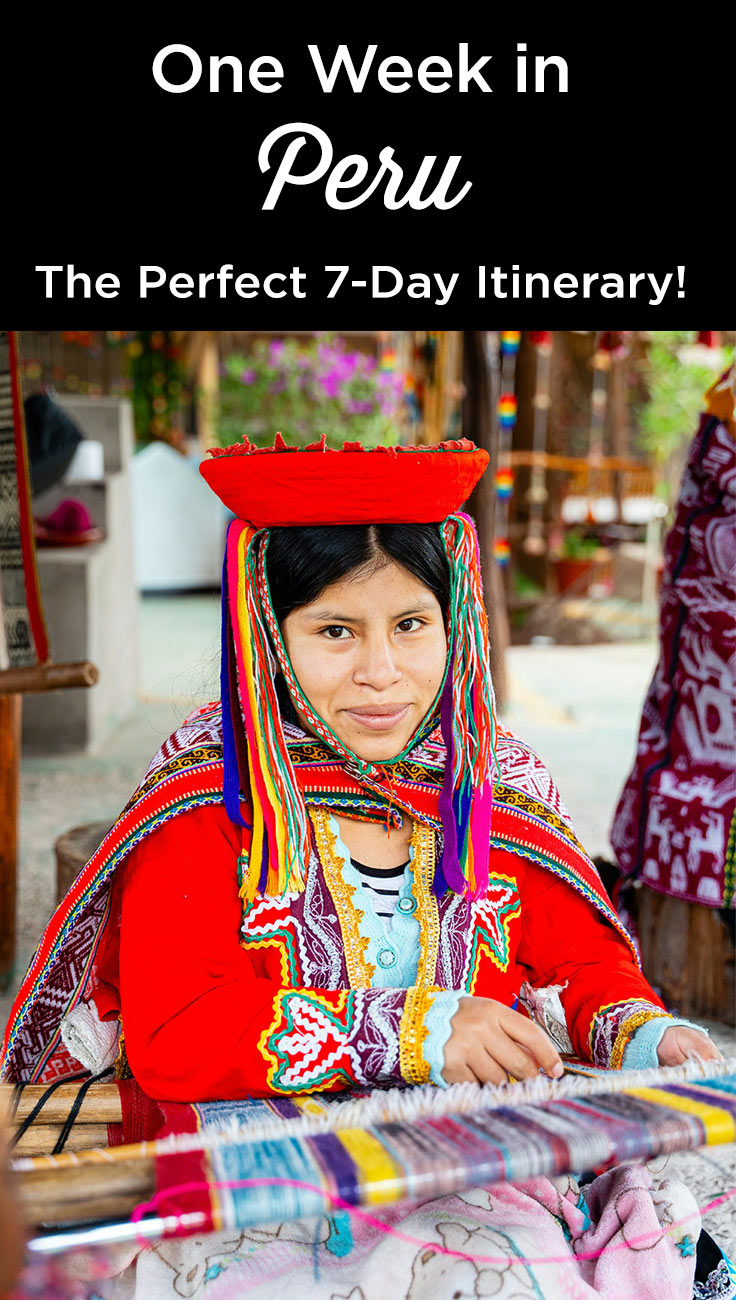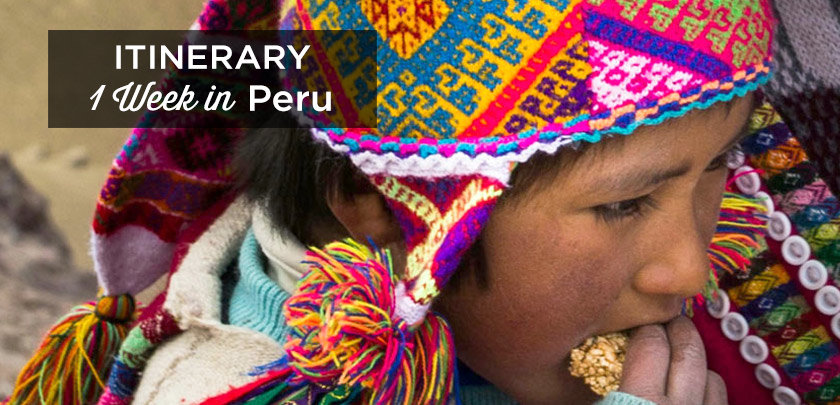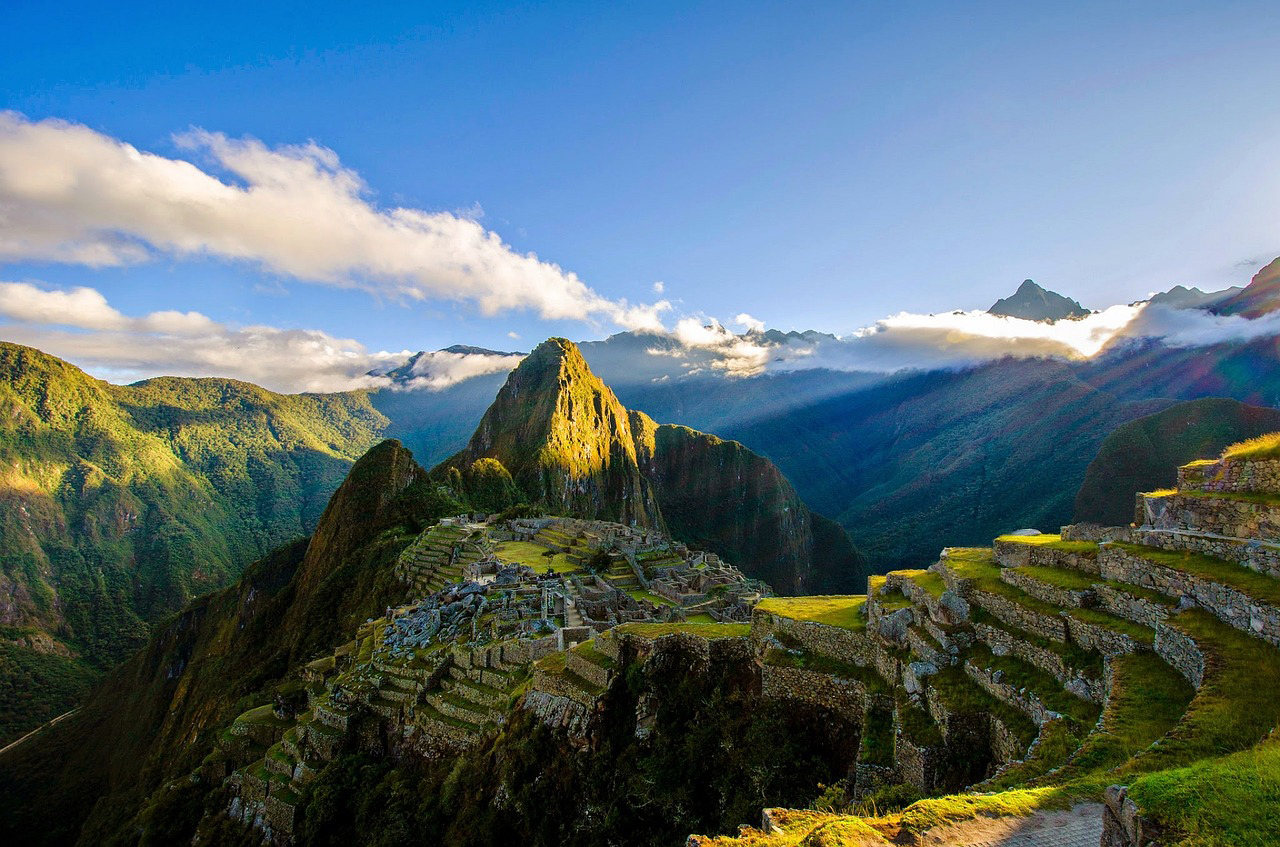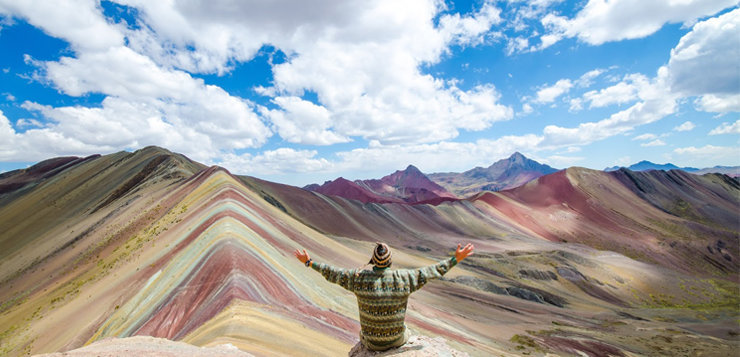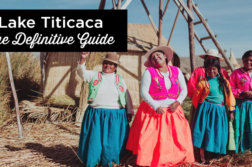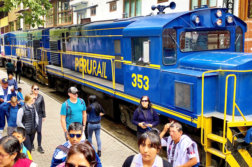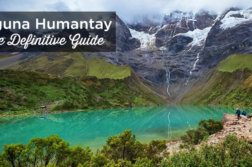The Perfect 7-8 Day Itinerary in Peru
Planning a trip to Peru but only have 1 week? No worries—you can still experience the country’s highlights in just 7-8 days!
While a 2-week itinerary is ideal for exploring the country in depth, you can still visit Peru’s most iconic destinations in just one week—as long as you plan it well!
With this one-week Peru itinerary, you’ll experience the best of the country, from the vibrant capital of Lima to the heart of the Inca Empire in Cusco, exploring the legendary Sacred Valley and the world-famous Machu Picchu.
Your journey will also take you to the breathtaking Rainbow Mountain and the unique floating islands of Lake Titicaca, offering a mix of stunning landscapes, ancient history, and authentic cultural experiences.
This itinerary is packed with must-see sites, giving you a taste of everything: coastal views, Inca ruins, majestic Andean peaks, and unforgettable lake scenery.
In this guide, I’ll share my best tips for each step of your trip, along with practical information and handpicked hotel recommendations for every budget.
Sommaire
- The Perfect 7-8 Day Itinerary in Peru
- What to Do and See in Peru in 1 Week
- Day 1: Explore Lima
- Morning: Explore the Historic Center
- Afternoon: Discover Miraflores and Barranco
- Day 2: Cuzco
- Morning: Explore the Heart of Cusco
- Days 3-4: Sacred Valley of the Incas
- Day 5: Machu Picchu
- Machu Picchu Tickets: Choose the Right One for You
- Day 6: Rainbow Mountain
- Days 7-8: Puno and Lake Titicaca
- 7 to 8 days in Peru: Is it enough time to see everything?
- What is the best time to visit Peru?
- How to Acclimatize to the Altitude in Cusco, Machu Picchu, and Lake Titicaca?
- Book Your Flight at the Best Price
- Rent a Car in Peru
- Traveling to Peru? These articles will help you!
- What to Do and See in Peru in 1 Week
What to Do and See in Peru in 1 Week
Day 1: Explore Lima
Welcome to Lima, where your Peruvian adventure begins!
As Peru’s bustling coastal capital, Lima often doesn’t get the attention it deserves, but if you enjoy delicious food and rich history, it’s definitely worth a visit.
With just one day, it’s best to focus on the must-sees: the Historic Center, the trendy districts of Miraflores and Barranco, and of course, Lima’s world-renowned cuisine.
Morning: Explore the Historic Center
Start your day in Lima’s Historic Center, a UNESCO World Heritage Site home to some of the city’s most iconic landmarks.
Head straight to Plaza Mayor, Lima’s main square, where you can admire the Government Palace and the Cathedral-Basilica of Lima, which houses the tomb of Francisco Pizarro, the founder of the city.
Next, visit the San Francisco Monastery, famous for its eerie catacombs filled with ancient human remains.
Inside, you’ll also find a unique Peruvian version of The Last Supper, painted by 17th-century artist Diego de la Puente, where guinea pig is served as the main dish—a detail you won’t see anywhere else in the world!
The monastery also houses a stunning library with over 25,000 books, some dating back to the 15th century.
Stroll along Jirón de la Unión, a lively pedestrian street lined with shops and colonial buildings, leading to Plaza San Martín, one of Lima’s most elegant squares.
While here, stop by the historic Gran Hotel Bolívar, famous for its signature cocktail, the Pisco Sour. If the timing feels right (I’ll let you decide), step inside and try one!
Feeling adventurous? Order the Pisco Sour Catedral, a double version known all over Peru.
Afternoon: Discover Miraflores and Barranco
In the afternoon, head to Miraflores. Start at Parque Kennedy, a vibrant park where street vendors sell delicious snacks like picarones (fried Peruvian doughnuts).
From here, walk along Avenida Larco to reach the famous Malecón de Miraflores, a scenic promenade with stunning views of the Pacific Ocean.
Stroll along the Malecón and pause at Parque del Amor, known for its colorful mosaics and the iconic sculpture of two lovers embracing.
Continue until you reach Larcomar, an open-air shopping center built into the cliffs, offering breathtaking ocean views.
Even if you’re not into shopping, it’s a great spot for photos or a short break.
Next, make your way to Barranco, Lima’s bohemian and artistic district.
Start at the famous Puente de los Suspiros (Bridge of Sighs), a landmark where local legend says if you hold your breath while crossing, your wish will come true!
Follow the Bajada de los Baños, a picturesque walkway that leads toward the ocean.
As you explore, stop by some unique cultural spaces, such as the Jade Rivera Gallery, Grada Galería, Cholo Terco Cultural Center, and El Gato Tulipán, all must-visit spots for art lovers.
If you continue downhill, you’ll reach the beach, but most visitors prefer to enjoy the colorful streets of Barranco.
Want to extend your evening? Head to one of Barranco’s best bars, such as Ayahuasca Bar, La Noche de Barranco, Rob Roy, or Garrison.
Where to stay in Lima
For these two days, I recommend staying in Miraflores or Barranco, which are safe and well-located neighborhoods:
- Pariwana Hostel Lima: a very friendly youth hostel in the heart of Miraflores. Clean rooms, relaxed vibe, good Wi-Fi, with a restaurant, bar, and rooftop terrace. Dorm bed from only $13 USD and $50 USD for a private room!
- Casita Libertad Homestay: a small house located on a quiet and safe street in the Barranco neighborhood. Cozy atmosphere, very clean, with access to a fully equipped kitchen. Room from only $29 USD per night.
- Casa Andina: a 3-star hotel in Miraflores offering one of the best value-for-money stays in Lima. Modern hotel, recently renovated, with excellent service and an on-site restaurant. Buffet breakfast included, from $87 USD per night.
- Courtyard Lima Miraflores: a modern 4-star hotel perfectly located just steps from Kennedy Park. Comfortable and bright rooms, with a gym and a café-restaurant. From $165 USD per night.
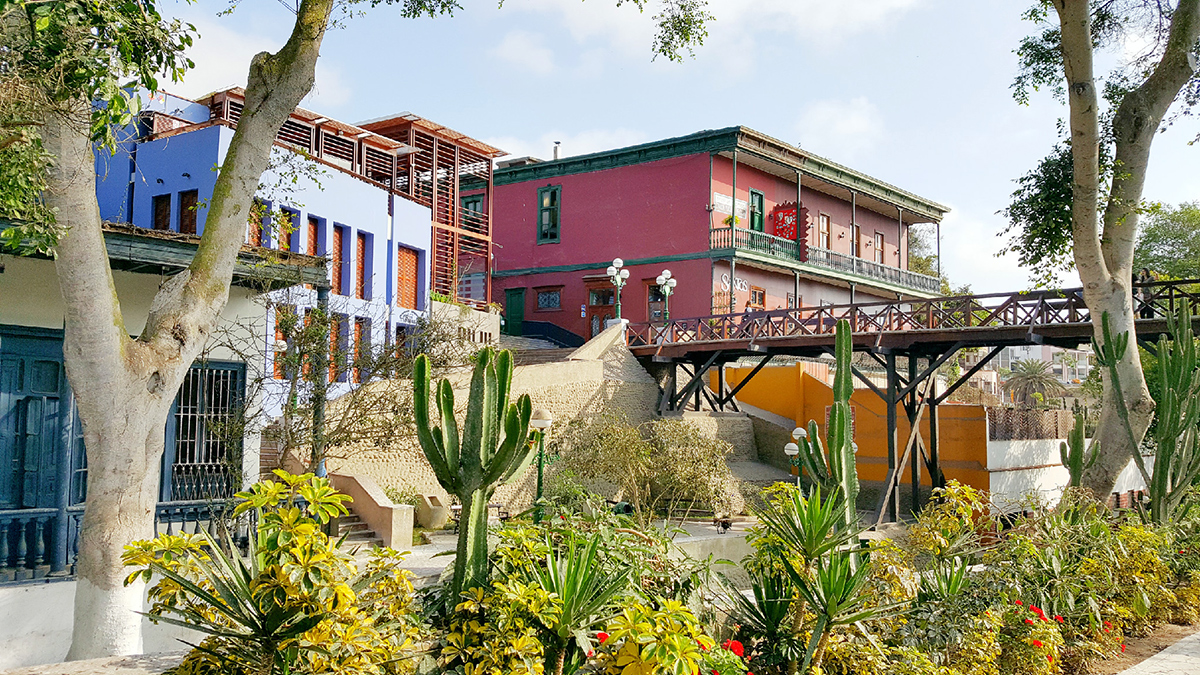
Day 2: Cuzco
On the second day of your 7-8 day trip to Peru, head to Cusco, the ancient capital of the Inca Empire.
To make the most of your day, I recommend taking an early morning flight from Lima to Cusco, which takes about 1.5 hours. Several airlines operate this route, including LATAM, Sky Airlines, and JetSmart.
Taking a bus is not a practical option for a week-long itinerary in Peru, as the journey takes around 20-22 hours. Since time is limited, flying is the only way to maximize your time in Cusco.
Take it easy, drink plenty of water, and try mate de coca (coca leaf tea), a traditional remedy that helps with acclimatization!
Morning: Explore the Heart of Cusco
Start your day in the heart of Cusco at the Plaza de Armas, the city’s main square and one of its most iconic landmarks.
Here, you’ll find two of the most emblematic monuments in Cusco: the Cathedral of Cusco, a stunning example of colonial architecture, and the Church of the Society of Jesus, known for its elaborate Baroque facade.
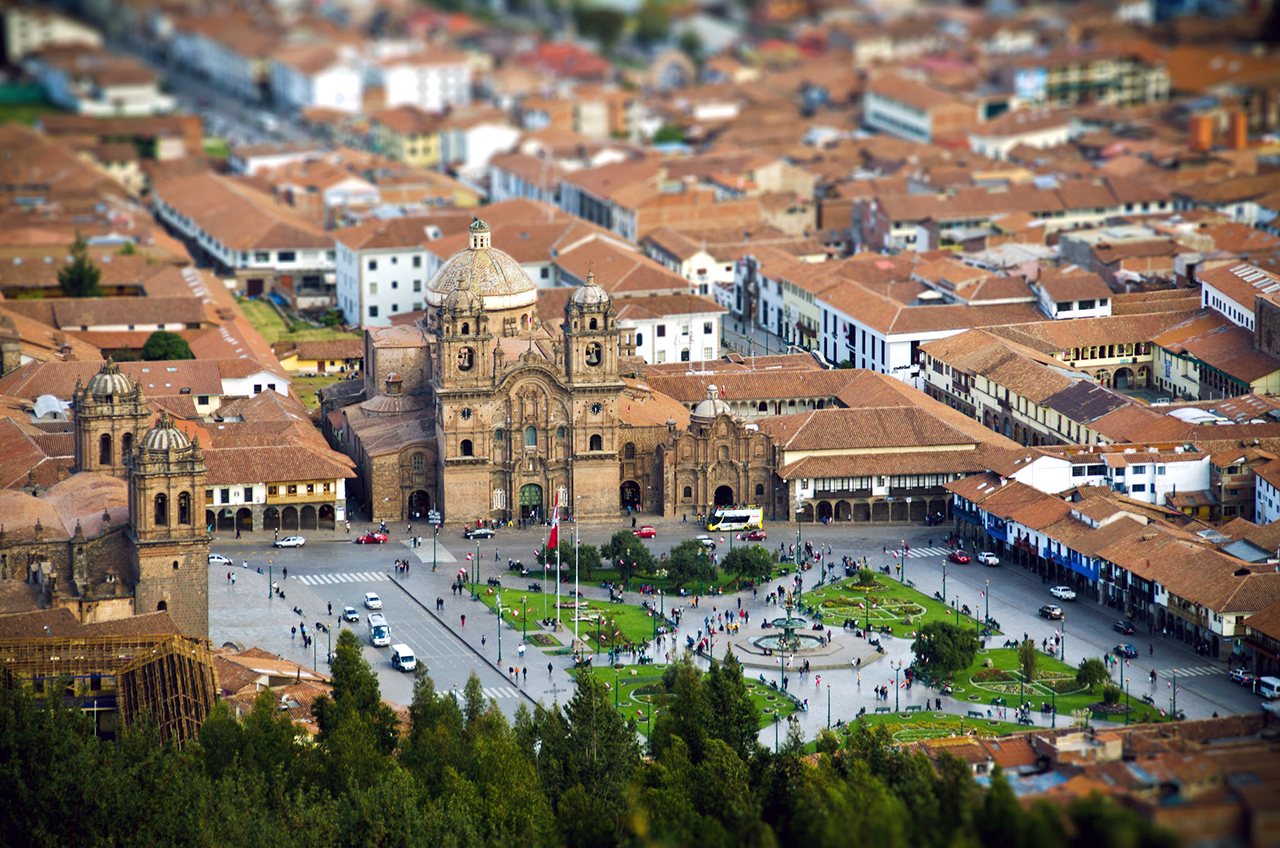
Head to the Coricancha, also known as the Temple of the Sun, which was one of the most important religious centers of the Inca Empire.
When the Spanish arrived, they built the church of Santo Domingo on its foundations, but you can still see the finely carved Inca stone walls that remain intact despite centuries of earthquakes.
It is one of the most fascinating places in Cuzco to see the contrast between Inca engineering and Spanish colonial construction.
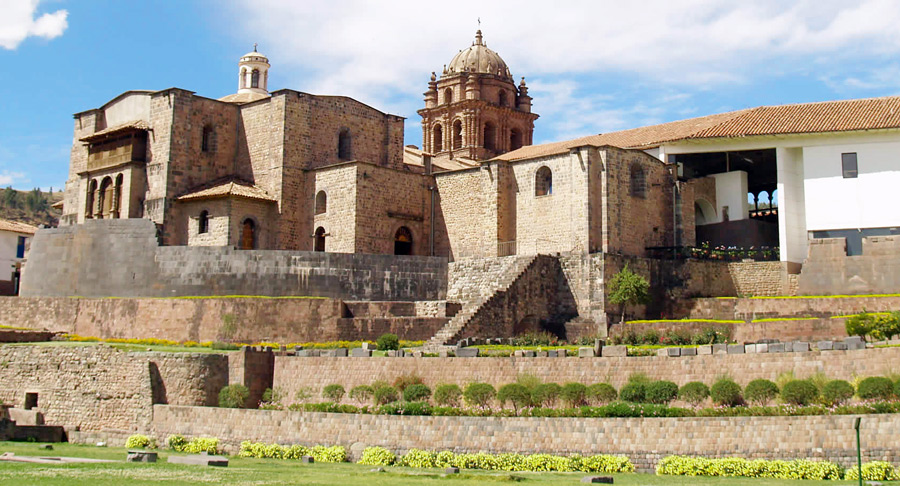
Continue your walk to Hatunrumiyoc street, a famous pedestrian street where you will find the 12-cornered stone, a perfect example of Inca stone carving skills.
You will see how the stones fit together perfectly: no mud plaster or gaps.
Afternoon: The neighborhood of San Blas
Head to the neighborhood of San Blas, one of the most charming and artistic neighborhoods in Cuzco.
Known for its whitewashed buildings and bright blue doors, it is a place full of artisan workshops, small galleries and charming cafes.
Its streets are narrow and steep, but well worth the effort. Climb the Cuesta San Blas (take it easy if you’re still feeling the effects of the altitude).
At the top, you’ll find the Plaza de San Blas, a quiet square where you can sit, relax and soak up the atmosphere.
If you continue up the street, you’ll come across L’Atelier Café-Boutique, a hidden gem with one of the best views in Cuzco. Its balcony is a favorite photo spot for visitors.
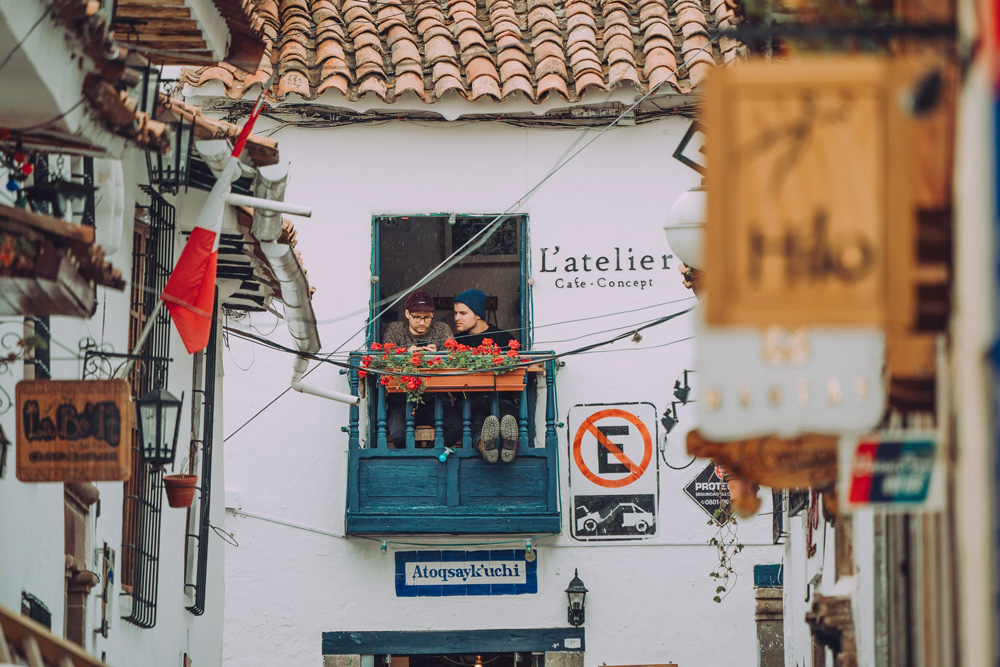
Going down again towards the Plaza de Armas, take Siete Culebras street.
It leads to Plazoleta de las Nazarenas, an elegant little square lined with luxury hotels, fine restaurants and the Museum of Pre-Columbian Art.
Where to Stay in Cusco
- Backpacker La Bo’M: One of the best hostels in Cusco. Founded by Sarah, a French expat, it includes a delicious crêperie next door. Perfectly located in the charming neighborhood of San Blas, it offers good Wi-Fi, a cozy vibe, and of course, amazing crêpes to start your day! Dorms from only $13 USD and private rooms from $33 USD.
- La Casona Real Cusco: For those looking for more comfort, this charming traditional-style guesthouse is located on a quiet street just steps from the Plaza de Armas. Impeccably clean, with hot water, great Wi-Fi, and a warm welcome. Breakfast included, all from just $76 USD per night!
- Hotel Tierra Viva Cusco San Blas: In the lovely San Blas neighborhood, this upscale hotel offers spacious rooms with very comfortable beds. Its modern décor with local touches and peaceful interior courtyard make for a relaxing stay. Buffet breakfast included. From $98 USD per night!
- Antigua Casona San Blas: A chic and intimate 4-star hotel in San Blas. It features very comfortable rooms, a warm atmosphere, and a tasteful blend of modern and traditional décor. Don’t miss their Piedra & Sal restaurant, one of Cusco’s best. Excellent breakfast included. From $250 USD per night.
- Palacio del Inka, a Luxury Collection Hotel: For a romantic stay in Cusco, this 5-star gem is housed in a spectacular colonial building across from Coricancha, with roots dating back to Inca times. Enjoy the indoor pool, gym, spa, bar, and restaurant. Delicious breakfast included. From $325 USD per night.
Days 3-4: Sacred Valley of the Incas
On days 3 and 4 of your week-long trip to Peru, you will explore the Sacred Valley, a key region of the Inca Empire, known for its archaeological sites and traditional Andean culture.
Here is my suggested program to visit the Sacred Valley in two days:
- Day 3: Visit Pisac in the morning, then the Inca ruins around Cuzco (Sacsayhuaman, Qenqo, Puca Pucara and Tambomachay) in the afternoon.
- Day 4: Visit Chinchero, then continue to Maras and Moray and end the day in Ollantaytambo, where you will spend the night.
It is mandatory to have a tourist ticket to access several of these places: Get it here!
You can return to Cuzco to sleep or spend the night in Ollantaytambo, as the train station in Ollantaytambo is much closer to take the morning train to Machu Picchu.
To make things even simpler, you can book this tour to the Sacred Valley that includes transportation, guide and lunch. You can book it here:
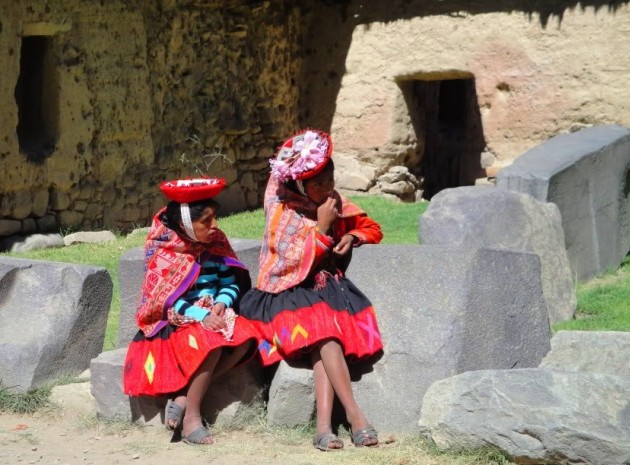
Day 3: Ruins around Cusco + Pisac
Morning: Pisac, one of the most famous stops in the Sacred Valley.
Start at the ruins of Pisac, located on a hill with a breathtaking view over the valley.
This Inca archaeological site is known for its agricultural terraces, ceremonial areas and breathtaking views. The ruins are extensive, so take your time to explore the different areas and enjoy the scenery.
After exploring the ruins, head to the town of Pisac to visit its famous handicraft market.
This bustling market is one of the best places in Peru to buy traditional handicrafts, Andean textiles, handmade jewelry and souvenirs.
It is a colorful and lively place where people from neighboring communities come to sell their products.
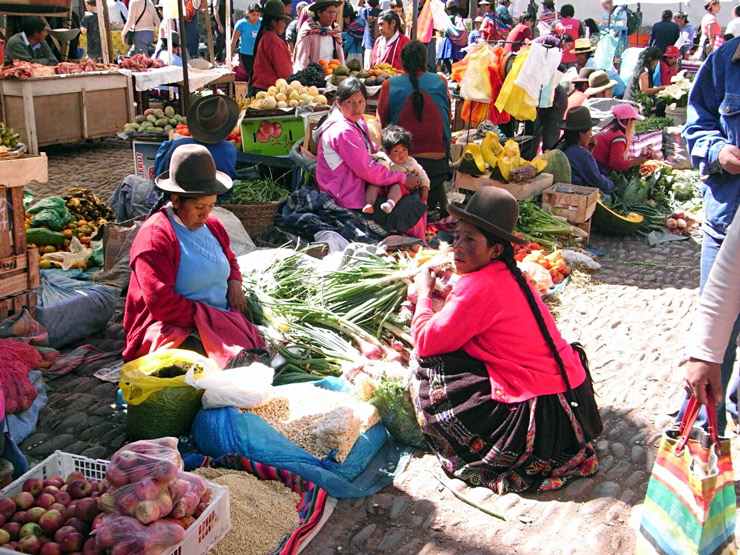
Afternoon: Visit to the Inca ruins around Cusco
From Pisac, return to Cusco, stopping at the Four Main Inca Archaeological Sites located on the outskirts of the city:
- Sacsayhuaman: One of the most important Inca sites, famous for its colossal stone walls with perfectly interlocking stones, some of which weigh over 100 tons!
- Qenqo: A unique Inca ceremonial site where nobles were mummified, famous for its subway chambers and stone carvings used for rituals.
- Puca Pucara: Known as the “Red Fortress”, this site was probably used as a military checkpoint to guard access to Cuzco.
- Tambomachay: Nicknamed the “Baths of the Inca”, this site has aqueducts, canals and waterfalls used for water rituals.
How to do it alone (without an agency):
- Cusco-Pisac: take a bus or van from Puputi street to Pisac (45 min)
- Pisac-Tambomachay: take a van to Cusco and tell the driver where you are getting off.
- Tambomachay-Cusco: go back down to Cusco (3 miles), stopping at the other three sites
With an agency (easier):
Another much simpler option is to take this Tour from Pisac with the Inca sites of Cusco (book here!), which includes hotel pick-up and lunch.
Return to Cusco for the night.
Where to Stay in Cusco
- Backpacker La Bo’M: One of the best hostels in Cusco. Founded by Sarah, a French expat, it includes a delicious crêperie next door. Perfectly located in the charming neighborhood of San Blas, it offers good Wi-Fi, a cozy vibe, and of course, amazing crêpes to start your day! Dorms from only $13 USD and private rooms from $33 USD.
- La Casona Real Cusco: For those looking for more comfort, this charming traditional-style guesthouse is located on a quiet street just steps from the Plaza de Armas. Impeccably clean, with hot water, great Wi-Fi, and a warm welcome. Breakfast included, all from just $76 USD per night!
- Hotel Tierra Viva Cusco San Blas: In the lovely San Blas neighborhood, this upscale hotel offers spacious rooms with very comfortable beds. Its modern décor with local touches and peaceful interior courtyard make for a relaxing stay. Buffet breakfast included. From $98 USD per night!
- Antigua Casona San Blas: A chic and intimate 4-star hotel in San Blas. It features very comfortable rooms, a warm atmosphere, and a tasteful blend of modern and traditional décor. Don’t miss their Piedra & Sal restaurant, one of Cusco’s best. Excellent breakfast included. From $250 USD per night.
- Palacio del Inka, a Luxury Collection Hotel: For a romantic stay in Cusco, this 5-star gem is housed in a spectacular colonial building across from Coricancha, with roots dating back to Inca times. Enjoy the indoor pool, gym, spa, bar, and restaurant. Delicious breakfast included. From $325 USD per night.
Day 4: Chinchero, Maras, Moray and Ollantaytambo
Morning: Chinchero
Start the morning with a visit to Chinchero, one of the most authentic villages in the Sacred Valley.
It is one of the best places to see traditional Andean weaving in action.
Local families demonstrate their ancestral techniques, using natural dyes made from plants and cochineal (a red dye).
You will also see artisans using traditional looms to create beautiful designs. This is a great opportunity to support local artisans and learn about the rich cultural heritage of the region.
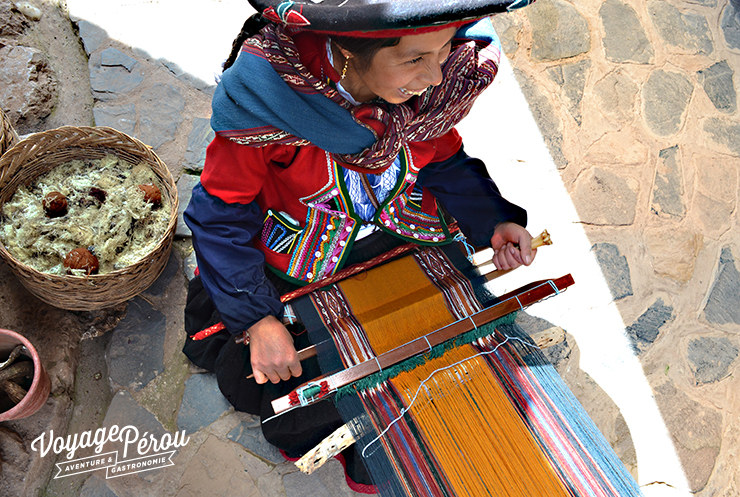
Late Morning: Maras and Moray
The next stop is the salt mines of Maras, a unique and emblematic place in the Sacred Valley.
These are thousands of small salt evaporation ponds built into the mountainside, used by local families to produce natural salt.
The view of the white pools contrasting with the brown mountains is unique, and you can even buy locally harvested pink salt!
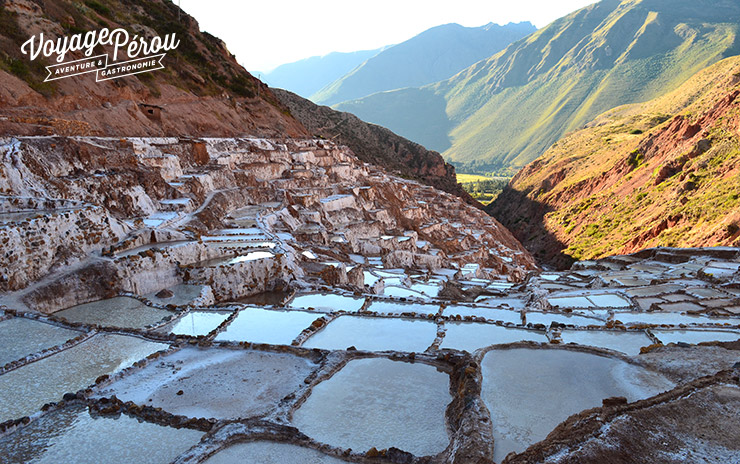
From here, continue to Moray, an Inca archaeological site famous for its circular agricultural terraces.
It is believed that these terraces were used as an agricultural laboratory where the Incas experimented with crops at different altitudes.
The circular design creates different microclimates, and it is impressive to see the precision and intelligence of Inca engineering in action!
Afternoon: Ollantaytambo
After Moray, head to Ollantaytambo, one of the best-preserved Inca villages in Peru.
It is also one of my favorite places in the Sacred Valley, thanks to its tranquil and authentic atmosphere.
The town has its original Inca street pattern and, as you stroll along its cobblestone streets, you will see Inca aqueducts still in use.
Don’t miss a visit to the Ollantaytambo fortress, an archaeological site perched on the side of a mountain that offers magnificent views of the surrounding area.
This fortress is of great importance, as it was here that the Spanish conquistadors and the last Inca resistance fighters clashed in the 16th century.
After exploring the site, you can stroll through the village, visit the stores or relax in a café.
As Ollantaytambo has a train station with direct links to Machu Picchu, I suggest you spend the night there.
Not only will you be closer to your next stop than if you were returning to Cuzco, but Ollantaytambo is also a great destination for walking.
Where to Stay in Ollantaytambo
- Las Portadas: This is the best budget option in Ollantaytambo. A typical local house with a lovely garden and mountain views, just 5 minutes from the main square and 15 minutes from the train station. Rooms from just $23 USD with breakfast included.
- Casa de la Chola: A beautiful room in a charming lodge located just outside of town, about 10 minutes from Ollantaytambo train station. Perfect for nature lovers. From $60 USD per night, with a breakfast that’s a true treat for food lovers.
- Apu Lodge: A lovely hotel with a garden and fantastic views of the mountains and Inca ruins. Very peaceful location, with spacious and comfortable rooms that can host up to 5 people. Friendly staff. Excellent breakfast included. From $93 USD per night!
- El Albergue Ollantaytambo: A countryside-style hotel located right at the Ollantaytambo train station, perfect for catching the early train to Machu Picchu. Comfortable rooms, a beautiful green garden, an organic farm, and a peaceful setting. Onsite you’ll also find an excellent restaurant, a coffee roastery, and a craft distillery. Breakfast included. From $275 USD per night!
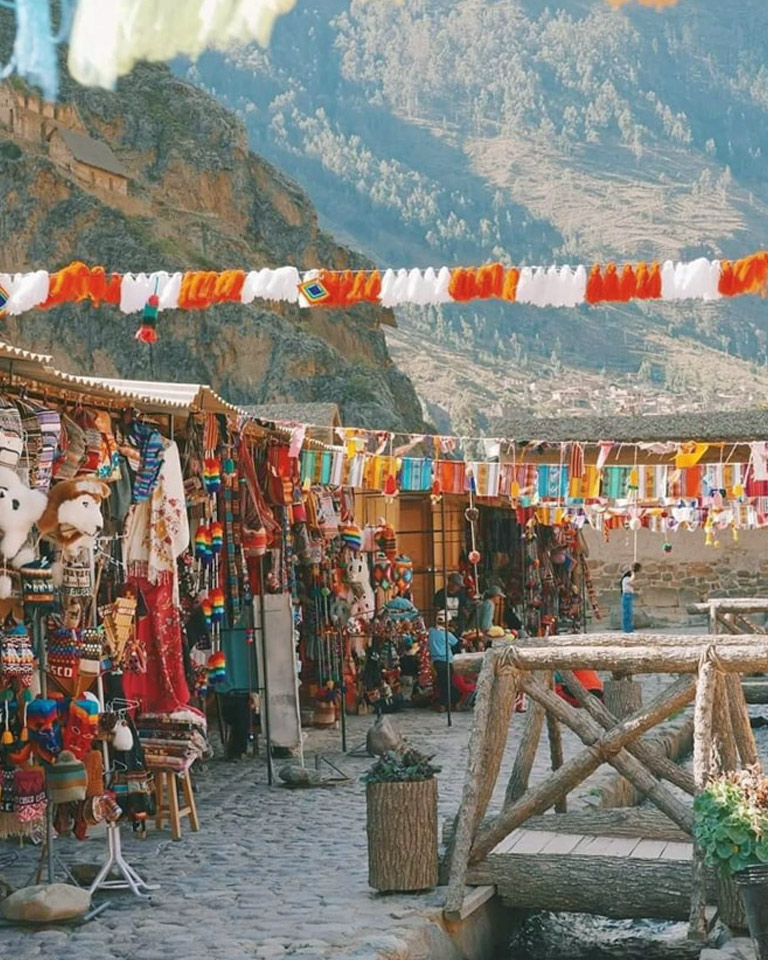
Day 5: Machu Picchu
Now comes the highlight of your week-long itinerary in Peru: the legendary Machu Picchu!
To make the most of your visit, I suggest taking an early morning train from Ollantaytambo to Aguas Calientes — a spectacular 1.5-hour ride through the stunning landscapes of the Sacred Valley.
Once in Aguas Calientes, hop on a 30-minute bus that zigzags up the mountain to the entrance of Machu Picchu.
To enter the site, you need to book three essential tickets in advance:
- Train ticket from Ollantaytambo to Aguas Calientes
- Bus ticket between Aguas Calientes and the entrance of Machu Picchu
- Machu Picchu entry ticket (check the different circuits available below)
Because daily visitor numbers are limited, tickets often sell out weeks (or even months) in advance — so make sure to plan ahead!
Machu Picchu Tickets: Choose the Right One for You
Once inside, you’ll finally explore the legendary Inca citadel of Machu Picchu.
You’ll visit iconic highlights like the Guardian’s House (perfect for the classic panoramic photo), the Temple of the Sun, the agricultural terraces, and many other breathtaking spots.
But keep in mind: access to different parts of the site depends on the circuit you select, as there are now several official routes—each offering a unique perspective.
If this is your first time visiting Machu Picchu, I recommend choosing one of the following tickets:
- Circuit 2 – Classic Route: The most popular option, giving you access to the best panoramic views and the main highlights of the site. Book your Circuit 2 ticket here
- Circuit 3 – Huayna Picchu: Includes access to Machu Picchu and Huayna Picchu, the iconic peak behind the ruins in most photos. Be ready for a steep climb and incredible views! Book your Machu Picchu + Huayna Picchu ticket here
- Circuit 1 – Machu Picchu Mountain: A more challenging hike, but perfect if you want to climb Machu Picchu Mountain for sweeping views of the entire valley. Book your Machu Picchu + Mountain ticket here
In the afternoon, you’ll make your way back to Cusco — first with the bus down to Aguas Calientes, then the train to Ollantaytambo, followed by a car or bus ride to Cusco.
Make sure to get a good night’s rest — your Rainbow Mountain tour starts very early the next morning!
Where to Stay in Cusco
- Backpacker La Bo’M: One of the best hostels in Cusco. Founded by Sarah, a French expat, it includes a delicious crêperie next door. Perfectly located in the charming neighborhood of San Blas, it offers good Wi-Fi, a cozy vibe, and of course, amazing crêpes to start your day! Dorms from only $13 USD and private rooms from $33 USD.
- La Casona Real Cusco: For those looking for more comfort, this charming traditional-style guesthouse is located on a quiet street just steps from the Plaza de Armas. Impeccably clean, with hot water, great Wi-Fi, and a warm welcome. Breakfast included, all from just $76 USD per night!
- Hotel Tierra Viva Cusco San Blas: In the lovely San Blas neighborhood, this upscale hotel offers spacious rooms with very comfortable beds. Its modern décor with local touches and peaceful interior courtyard make for a relaxing stay. Buffet breakfast included. From $98 USD per night!
- Antigua Casona San Blas: A chic and intimate 4-star hotel in San Blas. It features very comfortable rooms, a warm atmosphere, and a tasteful blend of modern and traditional décor. Don’t miss their Piedra & Sal restaurant, one of Cusco’s best. Excellent breakfast included. From $250 USD per night.
- Palacio del Inka, a Luxury Collection Hotel: For a romantic stay in Cusco, this 5-star gem is housed in a spectacular colonial building across from Coricancha, with roots dating back to Inca times. Enjoy the indoor pool, gym, spa, bar, and restaurant. Delicious breakfast included. From $325 USD per night.
Day 6: Rainbow Mountain
This part of your 8-day Peru itinerary takes you on one of the most unforgettable adventures of the trip: a visit to Rainbow Mountain, also known as Vinicunca.
This breathtaking natural phenomenon, with its multicolored mineral layers, has become one of Peru’s most iconic landscapes.
Your day begins early, with a pick-up from your hotel in Cusco between 3:00 and 4:00 AM.
Book your tour here:
The route takes you through stunning Andean landscapes, passing by picturesque villages, rolling hills, and snow-capped peaks.
After about 2 hours on the road, you’ll arrive in Cusipata, where you’ll stop for breakfast. I recommend using this opportunity to buy water and snacks for the hike.
From Cusipata, the journey continues by car for another hour to the starting point of the hike, located at an altitude of 15,500 ft (4,700 m).
Here, you’ll begin your hike to Rainbow Mountain, following a scenic trail with breathtaking views of the Andes. Along the way, you may encounter llamas, alpacas, and wild vicuñas roaming freely.
The hike to the summit is approximately 2 miles (3.2 km) and takes about 3 hours to reach the peak at an altitude of 16,450 ft (5,020 m).
Even if you’ve already spent a few days acclimating, you’ll want to take your time!
At the summit, you’ll be rewarded with a stunning view of Rainbow Mountain, where layers of red, yellow, green, and blue create a surreal, almost otherworldly landscape. It’s truly one of the most photogenic places in all of Peru!
You’ll have time to admire the scenery, take incredible photos, and soak in the experience before beginning the 2-hour descent back to the trailhead.
From here, you’ll return to Cusipata for a well-deserved local lunch, before heading back to Cusco. Arrival time varies between 4:00 PM and 7:00 PM, depending on the tour and traffic conditions.
After such an active day at high altitude, you’ll definitely need some well-earned rest!
Where to Stay in Cusco
- Backpacker La Bo’M: One of the best hostels in Cusco. Founded by Sarah, a French expat, it includes a delicious crêperie next door. Perfectly located in the charming neighborhood of San Blas, it offers good Wi-Fi, a cozy vibe, and of course, amazing crêpes to start your day! Dorms from only $13 USD and private rooms from $33 USD.
- La Casona Real Cusco: For those looking for more comfort, this charming traditional-style guesthouse is located on a quiet street just steps from the Plaza de Armas. Impeccably clean, with hot water, great Wi-Fi, and a warm welcome. Breakfast included, all from just $76 USD per night!
- Hotel Tierra Viva Cusco San Blas: In the lovely San Blas neighborhood, this upscale hotel offers spacious rooms with very comfortable beds. Its modern décor with local touches and peaceful interior courtyard make for a relaxing stay. Buffet breakfast included. From $98 USD per night!
- Antigua Casona San Blas: A chic and intimate 4-star hotel in San Blas. It features very comfortable rooms, a warm atmosphere, and a tasteful blend of modern and traditional décor. Don’t miss their Piedra & Sal restaurant, one of Cusco’s best. Excellent breakfast included. From $250 USD per night.
- Palacio del Inka, a Luxury Collection Hotel: For a romantic stay in Cusco, this 5-star gem is housed in a spectacular colonial building across from Coricancha, with roots dating back to Inca times. Enjoy the indoor pool, gym, spa, bar, and restaurant. Delicious breakfast included. From $325 USD per night.
Days 7-8: Puno and Lake Titicaca
The final leg of your 8-day trip to Peru takes you to the breathtaking Lake Titicaca, known as the highest navigable lake in the world.
Here, you’ll explore the magical floating islands of the Uros, the beautiful island of Taquile—famous for its traditional weaving—and the tranquil island of Amantani, where you can enjoy a local homestay experience.
- Discover everything in my complete guide to Lake Titicaca.
To visit Lake Titicaca from Puno, you have two great options:
1. Lake Titicaca Day Tour
A perfect option if you’re short on time. You’ll visit the Uros floating islands and Taquile Island, departing from your hotel in Puno at 6:00 am and returning in the afternoon.
Ideal if you’re arriving the night before or by the scenic train from Cusco.
Book your tour here:
2. Two-Day Tour with Overnight Stay on Amantani
This is my top recommendation if you have more time!
It’s a truly immersive experience where you’ll stay with a local family on Amantani, take part in cultural activities, and also visit the floating islands of the Uros.
The tour departs at 6:00 am on the first day and returns to Puno by 4:00 pm the next day.
Book it here:
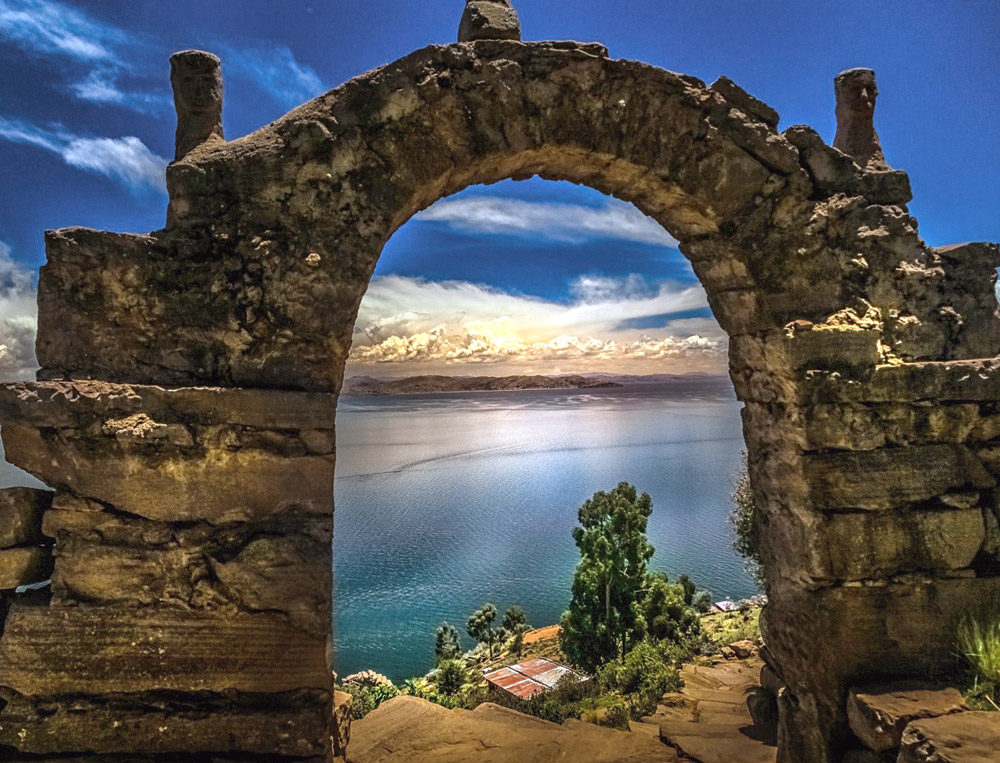
How do I get to Puno from Cusco?
Since tours start early in the morning (around 6:00 AM), choosing the right way to reach Puno is crucial.
Here are the 3 main options to travel from Cusco to Puno, with their pros and cons:
Option 1: Night Bus (Budget-Friendly Choice)
The most affordable option is taking a direct night bus from Cusco to Puno.
I highly recommend the 10:00 PM Cruz del Sur night bus, which arrives at Puno’s bus terminal around 5:00 AM, just in time to start the 2-day Lake Titicaca tour!
This option is comfortable and reliable, with reclining seats and onboard services. However, let’s be honest—no bus ride can replace a proper night’s sleep.
That said, it’s the most practical way to maximize your time.
Pros:
- Arrive just in time for the 2-day Lake Titicaca tour.
- Budget-friendly and efficient.
Cons:
- Sleeping on a bus isn’t ideal.
- You may feel a bit tired upon arrival.
Option 2: Panoramic Train (A Luxury Experience!)
For a scenic and comfortable journey, take the PeruRail Titicaca Train from Cusco to Puno. The journey lasts a full day, departing at 7:50 AM and arriving in Puno at 6:20 PM.
This train ride is an experience in itself, offering breathtaking views of the Peruvian Andes, luxury service, and live entertainment.
What to expect on board:
- Welcome drink
- Open-air balcony for panoramic views
- Restaurant car serving a 3-course gourmet lunch
- Bar car offering cocktails (including the iconic Pisco Sour!)
- Live music and traditional dance performances
- Afternoon tea service
Pros:
- A luxurious and unforgettable journey through the Andes.
- Magnificent scenery and onboard entertainment.
Cons:
- You’ll arrive in Puno too late for the 2-day Lake Titicaca tour.
- Limited time at Lake Titicaca since you’ll need to leave the next day.
Option 3: Flight (Fastest but Less Convenient)
If you’re short on time, you can take a flight from Cusco to Juliaca, the closest airport to Puno.
However, there are no direct flights, and all flights require a stopover in Lima, making the total travel time longer.
The best flight options:
- 7:30 AM flight with LATAM → Arrives in Juliaca at 11:35 AM.
- 1:10 PM flight with LATAM → Arrives in Juliaca at 5:15 PM, giving you a bit more time to enjoy Cusco before departure.
Pros:
- Fastest way to reach Puno.
Cons:
- No direct flights—requires a stop in Lima.
- Limited time at Lake Titicaca (only one day).
So, which transportation option should you choose?
- The train for an incredible travel experience, even if it means visiting Lake Titicaca in just one day.
- The night bus, which isn’t the most comfortable but allows you to maximize your time and fully experience Lake Titicaca in two days!
After visiting Lake Titicaca, head back to Lima to catch your international flight.
Where to stay in Puno
- Kaaro Hotel El Buho: A small rustic-style hotel with an excellent value for money, a few blocks from the center of Puno. Includes Wi-Fi, restaurant, and babysitting services. Breakfast included from $27 USD per night.
- Hotel Hacienda Plaza de Armas: A 3-star hotel ideally located on Puno’s Plaza de Armas. From $50 USD per night.
- Uros Titicaca Lodge: My top pick! Built on one of the floating islands of the Uros, it’s one of the most exotic hotels in Peru. If you can, I highly recommend spending at least one night here during your Peru trip. From $117 USD per night.
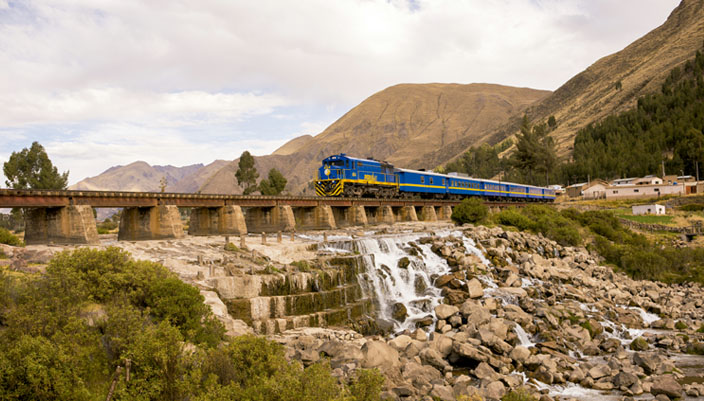
7 to 8 days in Peru: Is it enough time to see everything?
Yes, if you have little time, don’t worry: 7 days are enough to visit Peru.
Following my itinerary, you will be able to discover some of the most emblematic places of the country, such as Machu Picchu, the 7 Colors Mountain, the Sacred Valley and Lake Titicaca.
However, keep in mind that this itinerary is designed for active travelers able to keep up a good pace, as there is not much free time!
If you have more flexibility, I recommend that you opt for This 2-week route that allows you to see the must-see places while enjoying more of each stage, or even a 3-week itinerary that includes the Amazon jungle.
But I also believe that “done is better than perfect”, and if you only have a week, you can still create unforgettable memories!
If you’re interested in an even shorter stay in Peru, check out this 5-6 day Peru itinerary. It includes Arequipa and the Colca Canyon, but does not include Lake Titicaca and the 7-color mountain.
Also check out my suggested 10-day Peru itinerary which includes the must-see places in Peru in a short time.
[su_box title=”My advice” box_color=”#5eca0c” radius=”2″] For this 7-day Peru itinerary to work, it is essential that you book all your transportation, tours and entrance fees in advance.
Everything must be well organized so that you don’t waste precious time during the trip.
If you are really short on time, one way to save a day is to skip Lima and go directly to Cuzco, which will leave you more time for the Sacred Valley, Machu Picchu or Lake Titicaca. [/su_box]
What is the best time to visit Peru?
The dry season, from May to October, is the best time to follow this 7-8 day Peru itinerary.
It is a time of year with clear skies, mild temperatures and ideal conditions for outdoor activities, such as visiting Machu Picchu, the 7 Colors Mountain and Lake Titicaca.
This is what the weather is like in Peru:
Dry season (May to October): The best time to visit the country, with sunny days, clear skies and ideal weather for hiking and exploring.
As this is also the peak tourist season, it is essential that you book your tours, train tickets and entrance fees to Machu Picchu in advance.
Rainy season (November to April): Be prepared for rain, especially in the Andes and the Amazon. January and February are the rainiest months, and the Inca Trail is closed in February.
Trails may be muddy and some visits may be affected, but in return you will enjoy fewer crowds and lower prices.
How to Acclimatize to the Altitude in Cusco, Machu Picchu, and Lake Titicaca?
Altitude is something you need to take seriously when traveling in Peru, especially with this 7–8 day itinerary that covers high-altitude destinations like Cusco, Machu Picchu, Rainbow Mountain, and Lake Titicaca.
Because it’s a short trip, proper acclimatization is essential to fully enjoy the experience without being affected by altitude sickness.
The good news? I’ve designed this itinerary to help you gradually adapt to the elevation step by step.
You’ll begin in Cusco (11,150 ft), continue to the Sacred Valley (which is actually lower than Cusco), and then move on to higher spots like Rainbow Mountain (16,450 ft) and Lake Titicaca (12,500 ft).
Here are my top tips to avoid altitude sickness:
- Take it easy when you arrive: avoid harsh activities the first day. Walk slowly and, if possible, take a nap (this is what works best for me!)
- Drink plenty of water to help your body adapt.
- Drink mate de coca: This traditional tea made from coca leaves is one of the most effective natural remedies against altitude sickness. You will find it in most hotels and restaurants.
- Avoid alcohol: Although a pisco sour may be tempting, it is best to avoid it during the first 24 to 48 hours at altitude.
- Listen to your body: If you feel dizzy, have a headache or have difficulty breathing, get some rest. Everyone reacts differently to altitude, so pay attention to how you feel.
Rainbow Mountain sits at an impressive 16,450 ft, making it one of the highest points on your trip. Even with good acclimatization, it’s a challenging hike: the ascent is steady, and the effects of the altitude are much stronger than in Cusco or Machu Picchu. Take your time, pace yourself—the panoramic views at the summit are absolutely worth the effort!
You’ll finish your journey at Lake Titicaca (12,500 ft), where your body should be more used to the altitude. Still, don’t let your guard down: the paths on islands like Taquile and Amantani can be steep, and even short climbs might leave you short of breath. Go slowly and enjoy the scenery!
Book Your Flight at the Best Price
Planning a trip to Peru? To find the best deals on flights, I recommend using this flight comparison tool in partnership with Skyscanner.
It’s the easiest way to compare prices and secure the lowest fares for both international flights and domestic flights within Peru—helping you save money with zero hassle!
Rent a Car in Peru
Renting a car is one of the best ways to explore Peru at your own pace, giving you the freedom to visit hidden gems and make the most of your trip!
Personally, I always book with Booking.com Cars—here’s why it’s my go-to choice:
- Easily compare prices from all major rental agencies in one place—finding the best deal has never been easier!
- Free cancellation on most bookings, so you can reserve with peace of mind.
- Better insurance coverage at a lower price than rental companies—saving you money with no extra effort.
Click the button below to find the best car rental deals in Peru:
Rent a car
Book entrance tickets and guided visits
Take a travel insurance
Book a tour
✈️ Book your flight
Traveling to Peru? These articles will help you!
Discover all my articles about Peru: All my tips and itineraries to plan your trip in one place!
40 EPIC Things to Do in Peru (+ My Best Tips)
- Itinerary: 5-6 days in Peru – Lima, Arequipa, Colca Canyon, Cusco, Sacred Valley and Machu Picchu
- Itinerary: 10 days in Peru – The ideal itinerary for a short stay in Peru
- Itinerary: 2 weeks in Peru – The classic route
- Itinerary: 15 days in Peru – An itinerary that includes northern Peru
- Itinerary: 3 weeks in Peru
- Itinerary: 3 weeks in Peru + Bolivia – The best itinerary for visiting both countries
- Itinerary: 1 month in Peru – What to see and do in 30-31 days
You’re using Pinterest? Here is the picture to pin!
